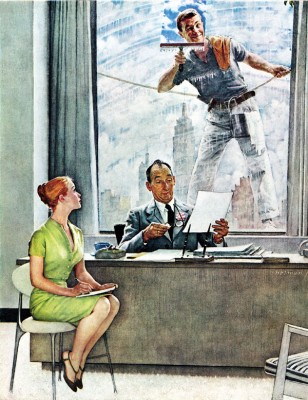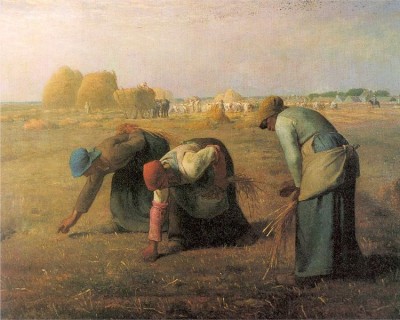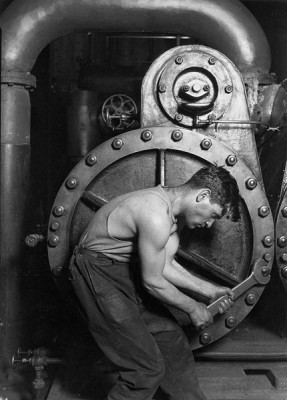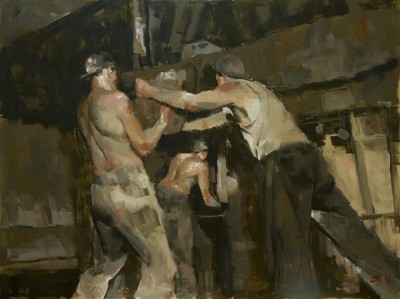Nowadays many people consider work something done indoors, sitting down, surrounded by sophisticated technology doing the work for them. While the blue collar workforce is still going strong in this country, the fact is some of us will never experience the sort of physical labor far more prevalent in decades and centuries past. Thankfully, artists of many cultures and periods have made workers their subjects, celebrating and preserving all aspects of their lives.
Wikipedia defines a blue collar worker as “a member of the working class who performs manual labor. Blue-collar work may involve skilled or unskilled, manufacturing, mining, construction, mechanical, maintenance, technical installation and many other types of physical work. Often something is physically being built or maintained.”
From the field laborers of Millet to the industrial workers of Hine, men and women at work have shown up in the work of many prominent artists. They not only document moments in history, they also offer the drama of people in specific settings and circumstances, showing both their psychological and physical sides in one composition.
Some noteworthy artists whose works later sold in the millions, sometimes posthumously, earned their living doing blue collar work. They resided in neighborhoods where they created fine art destined for the enjoyment of an educated elite, but in which their own economic status was closer to the struggling common man they lived alongside.
In more ways than one, artists can be considered part of the working class. Perhaps this is why the theme of the laborer continues to appeal, depicting direct involvement between the worker, the tools of their trade, and their environment, with the end result being something physically created where there was nothing before. So the next time you buy original art on Zatista, remember the work in “work of art.”
Brian Sylvester is a guest blogger on WallSpin, and an artist on Zatista.







Comments (0)